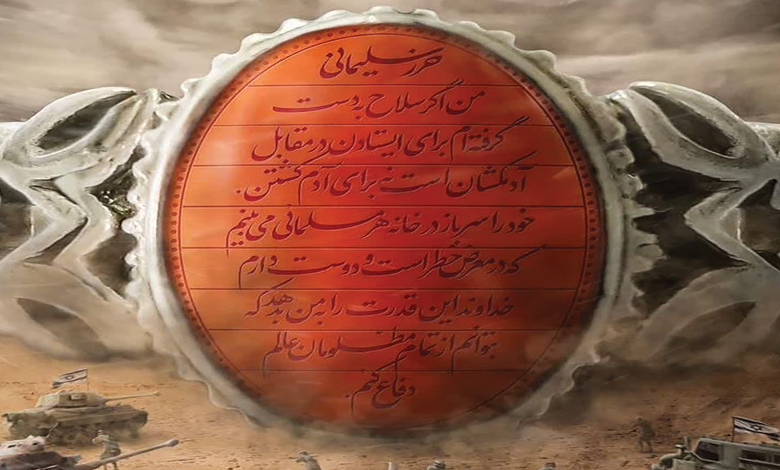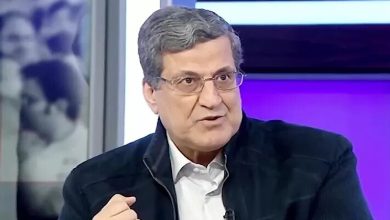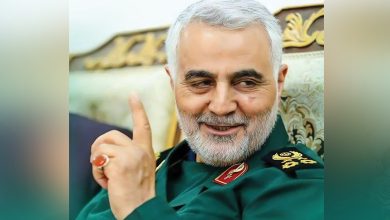Part Four: Soleimani and Religious Authority – A Special Bond with Najaf, Qom, and Tehran (Section Six)

 Political Section
Political Section
His relationship with the Leader of the Revolution went beyond that of commander and soldier; it involved daily interactions—face-to-face, by phone, or in writing. He received thousands of directives from the Leader, perhaps more than anyone else in the country. He would say that he had applied every directive, understood its outcome precisely, and found no errors. To him, this was evidence of divine inspiration in the Leader’s words and decisions.
His red line was the Leader. With everyone and every group, regardless of their ideological background, he acted with kindness and cooperation, but he could not tolerate the slightest disrespect toward the Leader. Once, when he heard someone accuse the Leader in a meeting, he was so furious that he said the person should have been struck with a glass to learn a lesson.
However, Soleimani was not just loyal to the Leader; he amplified loyalty. Like Malik al-Ashtar for Imam Ali (peace be upon him), he was not merely a follower but a strong arm of the Leader. With every step and every victory on the battlefield—from Syria to Iraq, from Lebanon to Yemen—he connected millions of hearts to the revolution and its Leader. His presence changed the balance; he not only defeated enemies but also instilled faith in the Leader’s wisdom among the people. He understood that his successes abroad ensured the revolution’s security at home.
When he crushed ISIS or revitalized the resistance axis, he demonstrated to the people that the system, despite domestic shortcomings, had the power to challenge the world. His martyrdom drew millions into the streets—not just for him, but for the path for which he sacrificed his life: the path of loyalty to the Leader. Even in death, he strengthened this loyalty. The enemy thought his elimination would break the resistance, but the flood of people mourning him showed that Soleimani kept the spirit of leadership alive in people’s hearts.
He acted with full awareness. He believed that the system’s foreign successes were key to the revolution’s endurance. Therefore, he never allowed the enemy’s false dichotomies—between economy and resistance, or domestic and foreign matters—to weaken his path. With every operation, speech, and smile to fighters, he showed that loyalty was not merely a concept; it was a force that could move the world. Soleimani erased the illusion of peace with the enemy and invalidated the logic of surrender. Through his steadfastness, he illuminated the path of resistance and showed that amplifying loyalty means building a world where the Leader and the revolution are synonymous with dignity and victory.
Soleimani and Internal Crises in Iraq in Light of Religious Guidance:
In contemporary Iraq, few periods have been free from sedition, plots, and unrest. Iraq, with its rich resources, strategic location, religious and ethnic diversity, and sacred shrines, has always attracted regional and international attention. In this turbulent context, General Qasem Soleimani was not only a professional military commander but also a holistic crisis manager in Iraq, using religious rationality, connections with the Marja’ (religious authorities), and deep trust in the people and resistance groups to play an unparalleled role in quelling unrest.
Strategic Perspective on the Role of Religious Authorities:
One of Soleimani’s distinguishing qualities was his deep understanding of the Marja’iyya’s (religious authority) role in Iraq’s social and political structure. Unlike some external forces who viewed the religious authorities purely as a security or instrumental matter, Soleimani believed that no strategy in Iraq could be sustainable without coordination with the Shia Marja’, especially Grand Ayatollah al-Sistani (may his shadow last).
He considered the Marja’ not only as a source of religious edicts but also as a social rationality authority, a guardian of national unity, and a pillar of political legitimacy in post-Ba’ath Iraq. Therefore, at critical junctures, he would consult with Marja’ representatives or the Marja’ himself before any action to ensure his political and operational moves aligned with Shia religious guidance.
2019 Sedition: October Protests and Crisis Management:
One of the most challenging periods for Soleimani in Iraq was the 2019 street protests, known as the October demonstrations. Initially, these protests began with legitimate social demands such as addressing unemployment, fighting corruption, and reforming the administrative system. However, they quickly became a scene for organized interference by external actors, particularly the U.S., Saudi Arabia, and networks linked to Western embassies.
During this period, some infiltrators exploited the public space, chanting anti-Hashd, anti-Iranian, and even anti-Marja’ slogans. Certain embassies attempted to activate Shia-on-Shia fault lines, pushing Iraq toward complete chaos.
In this environment, Soleimani entered the field with utmost caution and patience. He acted not only as the commander of the Quds Force but also as the representative of the rationality of the resistance axis, striving to:
-
Recognize legitimate public demands;
-
Respect the red lines of the Marja’;
-
Prevent blind security crackdowns;
-
And simultaneously, block separatist or subversive projects.







